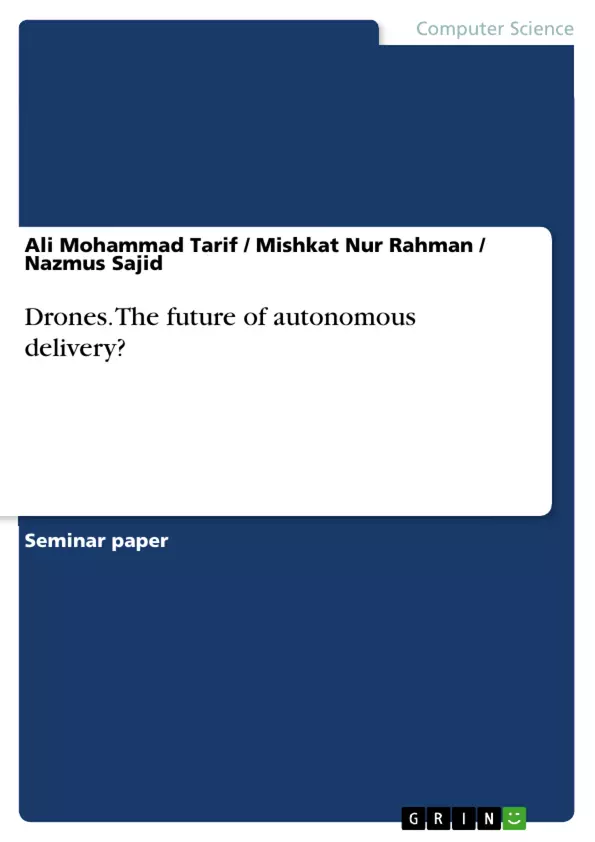Since ancient times, people have faced the necessity to transport goods or merchandizes or mail from one location to another. In almost every part of the world, runners were used by the rulers to convey their messages even before the time it was documented that postal services existed that dates to 255 BC.
To fulfill their delivery needs, people came up with different solutions such as using animals for delivery purpose and later structured delivery services were introduced. Blake (2010) stated that in the UK, King Henry VII appointed the position "Master of the Posts" and that eventually became the office of the Postmaster General for The Royal Mail back in 1516.
But long gone are the days where mediocre technologies or tools were used for delivery purposes. In this modern era, we have many sophisticated delivery services that are using modern day inventions like airplanes, delivery trucks, cargo ships and others. But to take things even further, little mechanical gremlins, drones, is gaining massive popularity to take charge of the delivery system.
Inhaltsverzeichnis (Table of Contents)
- Easier Shipment Delivery
- Cost Efficiency
- Environmentally friendly
- References
Zielsetzung und Themenschwerpunkte (Objectives and Key Themes)
This paper explores the potential of drones to revolutionize autonomous delivery systems. It investigates the benefits and challenges of using drones for delivering goods, highlighting their ability to streamline the process, reduce costs, and minimize environmental impact.
- Autonomous delivery using drones
- Benefits of drone delivery, including ease of shipment, cost efficiency, and environmental friendliness
- Technological considerations for drone navigation and obstacle avoidance
- The potential role of drones in disaster relief efforts
- Challenges and limitations associated with drone delivery
Zusammenfassung der Kapitel (Chapter Summaries)
The chapter "Easier Shipment Delivery" discusses the traditional methods of delivering goods and their limitations, such as time-consuming processes and reliance on ground vehicles. It then introduces drones as a potential solution, highlighting their ability to navigate complex routes, avoid obstacles, and deliver goods more efficiently. The chapter also emphasizes the importance of automated systems for drone navigation and the role of GPS technology in optimizing delivery routes.
Schlüsselwörter (Keywords)
Drones, autonomous delivery, unmanned aerial vehicles (UAV), delivery efficiency, cost-effectiveness, environmental impact, GPS navigation, obstacle avoidance, disaster relief.
- Citar trabajo
- Ali Mohammad Tarif (Autor), Mishkat Nur Rahman (Autor), Nazmus Sajid (Autor), 2017, Drones. The future of autonomous delivery?, Múnich, GRIN Verlag, https://www.grin.com/document/386119



